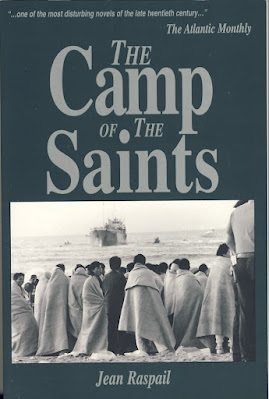Book Review: 'Deathworld 2' by Harry Harrison
'Deathworld 2' (151 pp.) was published by Bantam Books in September, 1964, and features cover art by James Avati.
(My review of the first volume in the series is available here.)
This is the second volume in the 'Deathworld' trilogy, one of Harrison's most enduring and successful franchises. The first volume of the trilogy began as a serialized novel premiering in Astounding Science Fiction in January 1960, and saw paperback publication later that year. 'Deathworld 3' was issued in paperback in 1968. There are softcover and hardcover omnibus editions of the 'Deathworld' trilogy available from publishers such as Orbit and Gollancz.
In the opening pages of 'Deathworld 2' our protagonist, the gambler and soldier of fortune Jason dinAlt, is abducted from the planet Pyrrus by one Mikah Samon, a self-righteous bounty hunter. Samon intends to return dinAlt to the planet Cassylia, where dinAlt is sure to receive a most unpleasant reception.
En route to Cassylia, dinAlt, ever phlegmatic, endures Mikah's pieties and sermonizings and waits for an opportune moment. When this comes, using a well-timed subterfuge, dinAlt cripples the bounty hunter's spaceship. A forced landing on the nearest habitable planet is required. But this leaves the two men stranded in the bleak and foreboding desert of an uncharted world, devoid of much in the way of advanced civilization.
Making things worse, dinAlt and Samon soon are enslaved by the brutish overlord Ch'aka, whose only ambition in life is to send his charges - spurred by blows and kicks - scouring the desert in search of krenoj roots, and the occasional edible piece of carrion.
Jason, of course, has no intention of remaining Ch'aka's slave. After surviving the remarkably dangerous life forms of Pyrrus, what awaits for him on this primitive planet can't present much of a challenge.
But Jason dinAlt hasn't planned for the betrayals that are going to sabotage his plans for the future...........
Well before finishing 'Deathworld 2', I was aware of the writerly things that make Harry Harrison one of the more accomplished sci-fi authors of the postwar era. His prose is direct, unadorned, and deceptively simple. Dialogue is straightforward, and characterization restrained but quite adequate. The fact that the novel is only 151 pages in length means that the narrative moves quickly, with plot turns and twists inserted with just the right frequency to keep the storyline from becoming too static, or alternatively, too complicated.
Unlike 'Deathworld', which was very much an intense adventure novel, the sequel is more focused on Jason dinAlt's gift for sardonic humor under the most trying of circumstances. The only reason I couldn't give 'Deathworld 2' a five-star Rating was the presence of a few too many segments in which dinAlt and his unwelcome companion Mikah Samon engage in philosophical debates. Harrison intends these to represent a rebuke of those burdened with holier-than-thou complexes, but I found that these debates distract, rather than enhance, the narrative.
The verdict ? Like the other volumes in the trilogy, 'Deathworld 2' is an exemplar of the sci-fi action genre as it stood in the 1960s. The novel has aged quite well in the ensuing 58 years, and well is worth searching out.




















































































